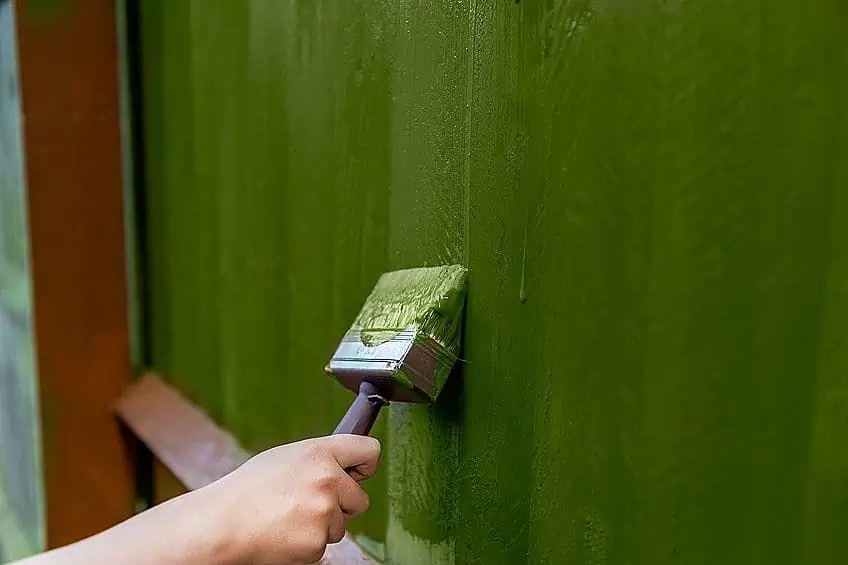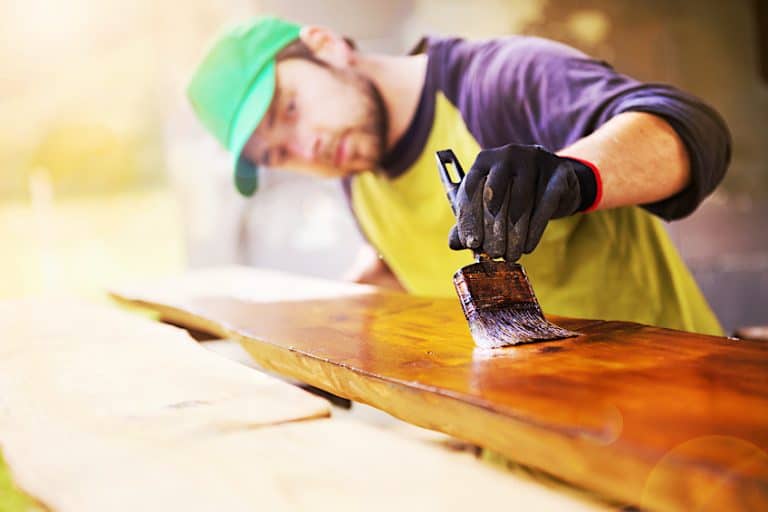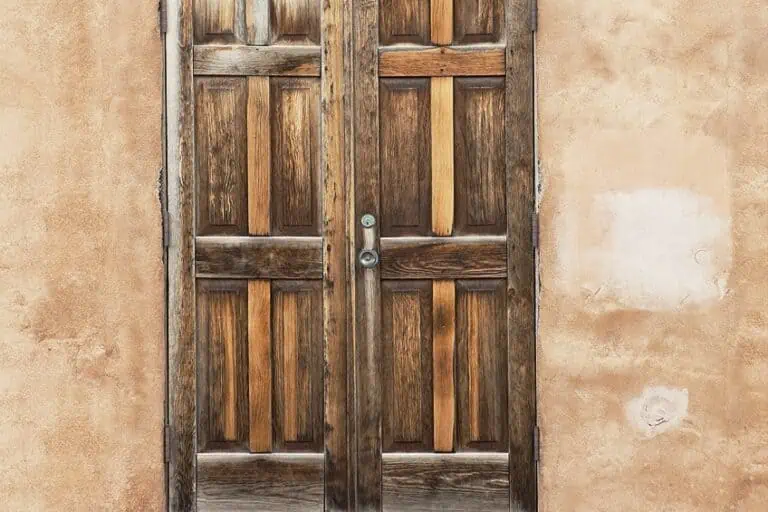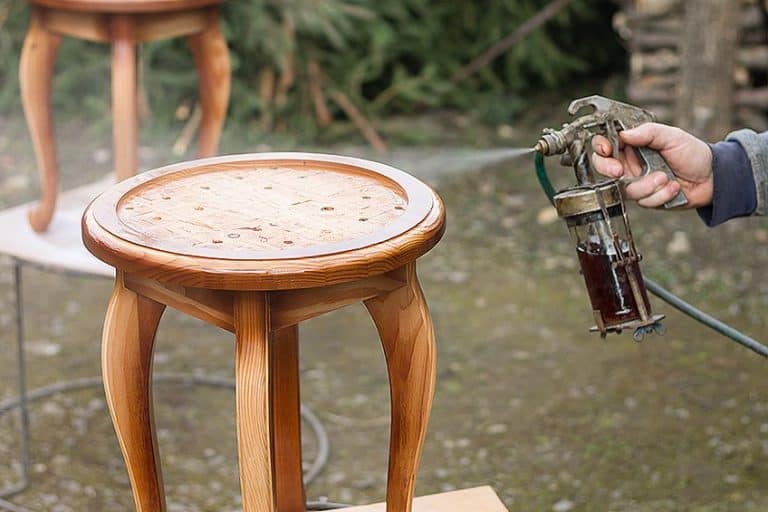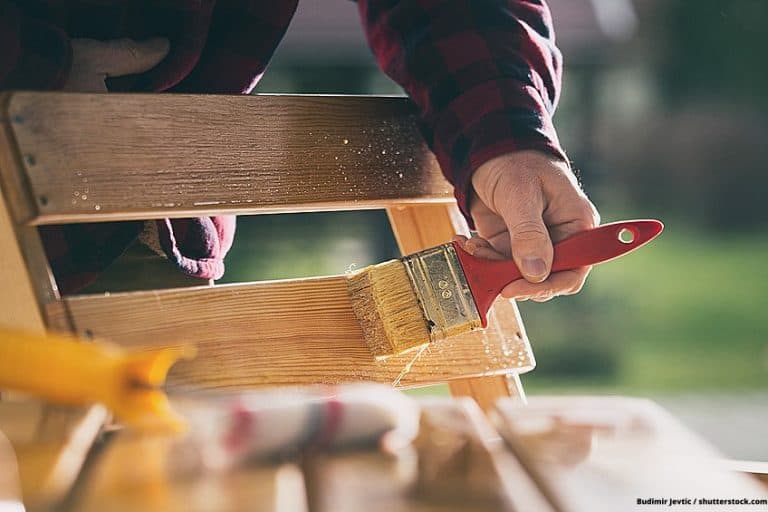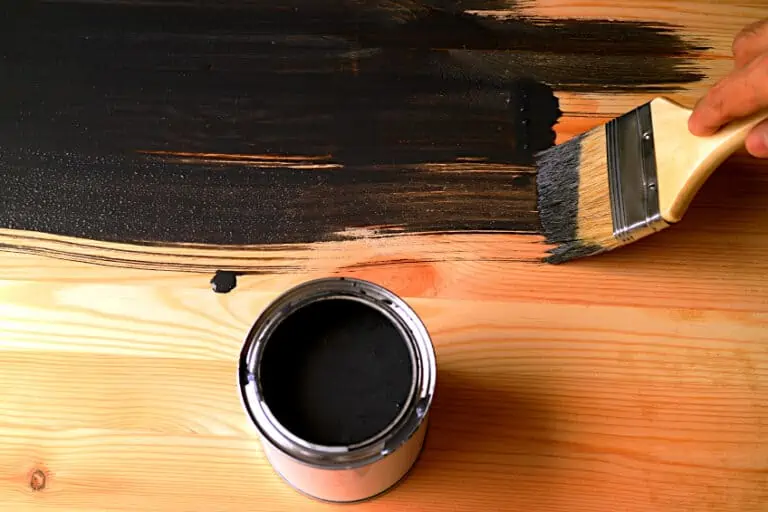Painting over Stained Wood – How to Cover an Old Paint Stain
Are you in possession of a piece of furniture that is an antique or even an old family heirloom? Perhaps your piece has been stained or painted previously and is looking a little worse-for-wear, but it has a lot of sentimental value for you. If you do not want to get rid of it, what can you do to bring back its beauty? This guide will show you how to paint over wood that has already been stained.
Can You Paint Over Stain?
It is entirely possible to paint over an old wood stain, and you can learn how to paint over stained wood yourself. The first thing to remember is to prepare the wood properly, or else your whole project will be a waste of time. Read further to discover the method of painting over stained wood.
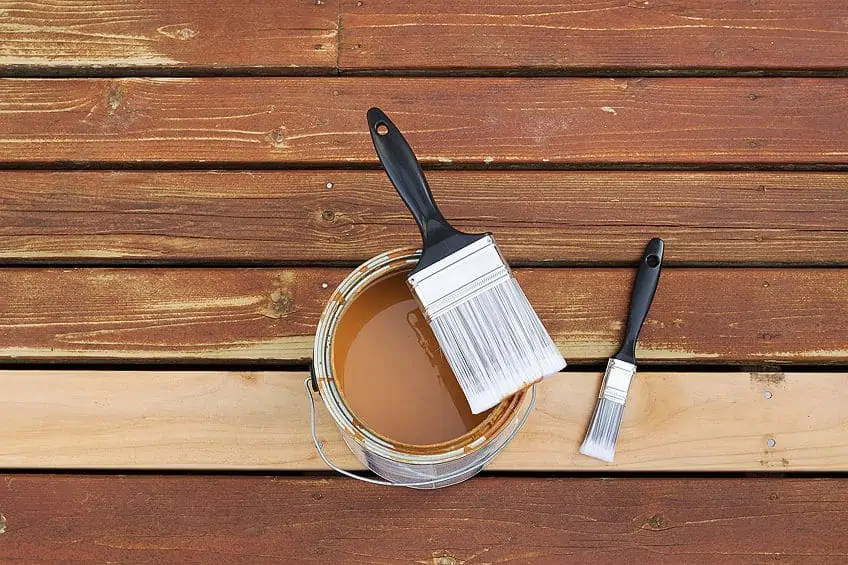
Prepare the Wood
Before you start with any work, you have to get your workspace ready. This means that you will have to lay down some sheeting to make it easier to clean up later. If you are working with a type of furniture, you will have to first remove any hardware, which includes handles, hinges, and other fittings. You can then follow these steps:
- Wash the wood-stained surface with clean, soapy water to remove any dust or dirt.
- Some have suggested that if your stained wood has been protected with a varnish, all you need to do is roughen the surface and apply your paint. We suggest that you first remove the varnish layer before applying the paint so as to avoid any further problems that may occur
- If you find some oily or greasy spots, use TSP (Trisodium Phosphate) cleaner to remove them.
- Using 150-grit sandpaper, sand the surface with the grain. Avoid moving in circular motions when roughening the surface. You can then wash the dust away.
- Now, wipe the surface using a deglosser, which will strip the finish off of the wood surface. As it is a chemical substance, ensure that you use protective equipment and work in a well-ventilated area.
- Give the wood about 10 minutes to dry.
- If you detect any scratches or holes in the wood, use a wood filler to repair them. You can then sand those areas again with sandpaper and wipe the surface clean.
Apply the Primer
It is always important to apply a primer before you paint as it allows the paint to grip better and last longer. When it comes to applying the primer, there has always been difficulty in not knowing which primer to apply. Should you use a water- or oil-based primer? Let us now consider this particular problem in more detail.
A simple solution: If your topcoat is water-based paint, then you should use a water-based primer. If the topcoat is oil-based, you should apply an oil-based primer.
Water-based primers are normally used for ceilings or walls, while oil-based primers tend to be used for windows, woodwork, or doors.
One major benefit of using water-based primers is that they dry very quickly, meaning that you can apply the topcoat within hours. Oil-based primers, on the other hand, take a lot longer to dry. You may have to wait for a few days before you can apply the topcoat of paint.
You can overcome this problem by using a shellac primer, which tends to dry within hours and will still offer you all the benefits of an oil-based primer. Oil-based primers provide your wood with a far better protective coat than water-based primers.
Some have suggested that you make use of water-based primers if you are going to use it indoors, but use an oil-based primer if your application is for outdoor use. It is always a good idea when you purchase your primer to ask the supplier to tint the paint to a color that is close to the topcoat you want to apply. This option will reduce the bleeding effect that the stain often produces, whereby it leaves dark marks on the surface, especially if the stain is a dark color.
If the wooden surface has been badly marked with stains, crayons, ink, grease, scuff marks, or other brown or yellowing stains, we suggest that you use a stain-blocking primer. This type of primer will prevent those nasty stains from coming through onto your newly painted surface and spoiling the new look you are trying to obtain on your wooden items.
When applying the primer, you can either use a paintbrush or a roller, but the foam brush or roller will give you better results.
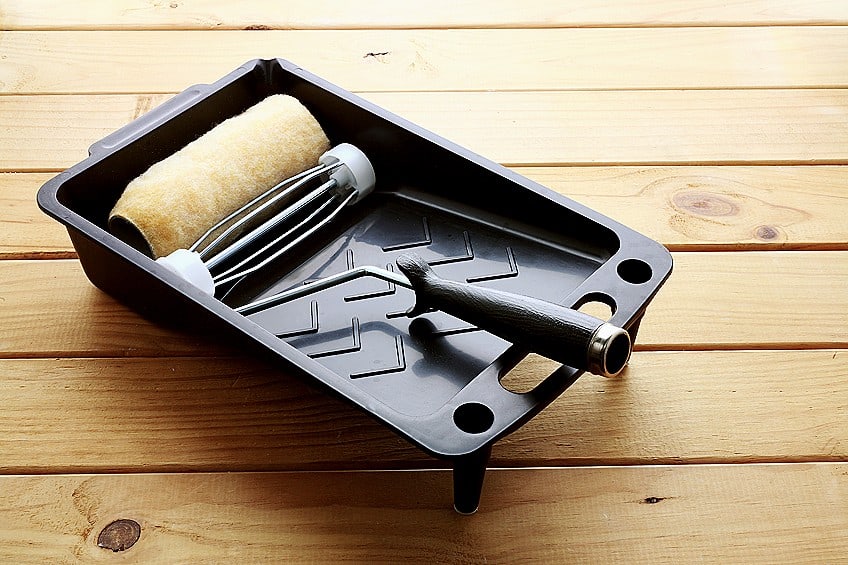
Best Water-Based Wood Primer: RUST-OLEUM Zinsser Bull’s Eye 1-2-3 Primer
This water-based primer can be used both indoors and outdoors, and will adhere to most surfaces easily without any need for sanding. This product will resist all mold and mildew, blistering, and peeling.
This primer is ideal for applying to wooden pieces that have metal attachments, as this product is formulated with a rust inhibitor. It can be cleaned easily with some soap and water. This product also works as a sealer in that it will prevent any of the wood tannins from bleeding through.
Pros
- Can be used on both interior and exterior surfaces
- Adheres to surfaces with ease
- Resistant to mold, mildew, blistering, peeling, and rust
- Easy to use
- Good value for money
Cons
- Thin consistency requires more coats
Best Oil-Based Wood Primer: KILZ Premium High-Hide Stain-Blocking Primer/Sealer
This is a primer that also works as a sealer and stain-blocker, its powerful formula enabling it to cover light to medium stains and old colors. You should not have a problem applying this primer to any interior or exterior surfaces, as it has excellent adhesion.
This product provides a smooth, even finish that will seal all porous surfaces and will fill in small cracks and holes. It is resistant to mold and mildew, produces no VOCs (Volatile Organic Compounds), has a low odor, and is safe for use under or over oil- or latex-based paints.
Pros
- Excellent adhesion to most surfaces
- Mold- and mildew-resistant
- VOC-free
- Low odor
- Easy to use
- Good value for money
Cons
- Thick consistency, so it can be difficult to work with
Applying Caulking
Many people ask whether it is necessary to apply caulking after your primer and before you paint. The answer is simple: If your wood has been stained, you will not see the cracks between the joints of the pieces of wood; however, as soon as you paint the wood those cracks will become very noticeable. This is why caulking is so important, as it will flow into those cracks and seal them, making them invisible to the eye.
Once you have applied the caulking, wipe the excess off using a fine weave cloth (like flannel sheeting or cloth diapers) that has been soaked in water. Then wipe the excess water off and allow the wood to dry completely, preferably overnight, before you begin painting.
Applying the Paint
After the wood surface has been properly primed and the primer has dried completely, you can start with painting the wood. Apply a water-based paint over a water-based primer and an oil-based paint over an oil-based primer. It is better to give the wood surface at least three coats and to make sure that it covers the primer completely. Only apply the next coat when the former coat has dried properly overnight.
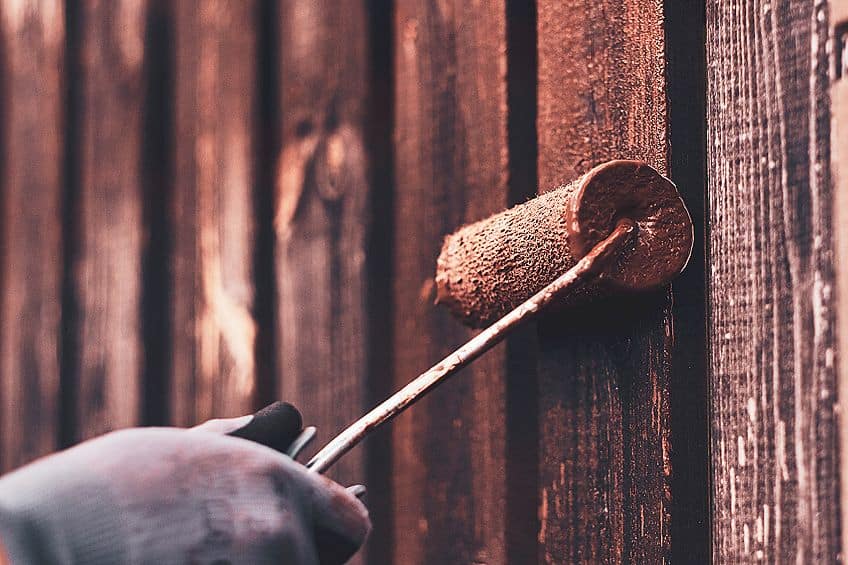
Applying the Topcoat
After you have finished painting the wood surface, ensuring that you have covered all marks, we advise you to apply a topcoat or sealant to your wood surface. The perfect type of paint to use is a polyurethane topcoat in order to give your wood that protective finish. This topcoat can be applied using a cloth or an aerosol spray. If you need an extra shine on the finished painted surface, you can apply some paste wax.
Supplies you Will Need:
- Plastic Sheeting: You will need some sheeting or a tarp to protect your surrounding area.
- Sandpaper: 150-grit should do the job nicely.
- Paintbrushes or Rollers: Make sure that you buy foam-type brushes or rollers for the best results.
- Tack Cloth: They are not expensive and are made to use on wood.
- Primer: Choose a primer with a water or oil base depending on the original paint stain.
- Paint: Select an oil- or water-based paint for your wood.
- Protective Finish: A polyurethane paint is usually perfect for that final coat.
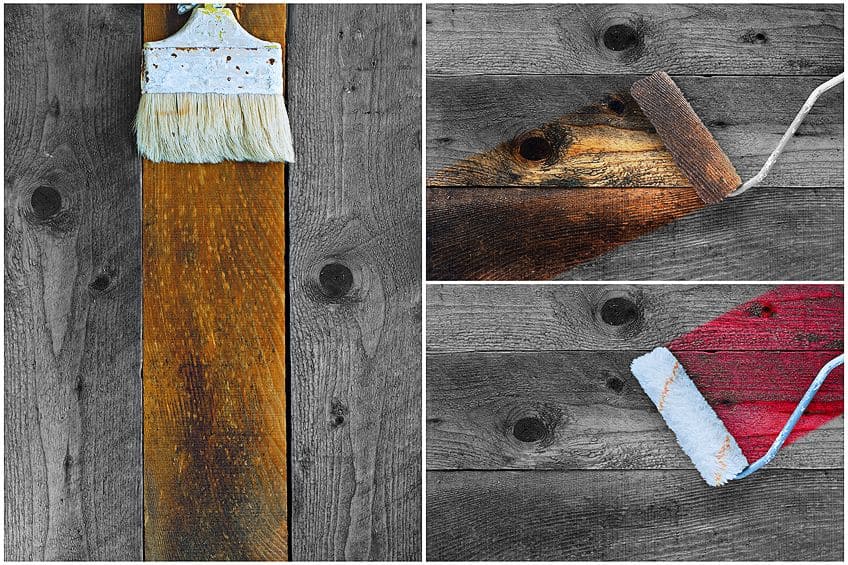
Paint-Stained Wood Without Sanding
Is it possible to paint over your stained wood without sanding it down first? We all know the work involved in sanding wooden surfaces: Spending the whole day sanding and the mess it makes. So, if we can do the job without this step, would it save some time and effort? This is possible by making use of what is referred to as liquid sandpaper or deglosser. Here are a few reasons as to why many users prefer it to sandpaper.
Saves You Time
Deglosser works much faster than sandpaper, saving you hours of hard work. In most cases, you can complete the job in 15 to 20 minutes. Detailed or hard-to-reach areas are particularly difficult. Sanding these surfaces can take you hours, whereas the liquid sandpaper can do the job in about 15 minutes. All you need to do is apply the deglosser, wait for 15 minutes, wipe it off with a clean dry cloth, and the job is done. Your wood is then ready for priming and painting.
Not as Messy
When considering a fairly large project that needs sanding, whether indoors or outdoors, it is a messy task. Dust goes everywhere and gets into everything like your hair and clothes. The sand also gets all over the floor and can even be found in other rooms of the house.
When using deglosser, all of that messy dust is done away with, and all you have left is some residue that can easily be cleaned up. This method has the same result as sandpaper and leaves the wood surface rough and ready for the paint.
Saves You Money
The cost of a bottle of deglosser is very cheap and goes a long way, whereas the cost of sandpaper is not so cheap, and you will find that you need quite a lot of it.
Easy to Apply
All you need to do is apply the deglosser to the surface, where it will run into all the crevices and cracks. Sandpaper, on the other hand, requires elbow grease and is difficult to get into those cracks and crevices.
What Wood Surfaces are Good for Deglossing?
This type of process is used instead of sandpaper for items that are detailed and difficult to get to. Such items include cabinets, moldings and trimmings, furniture, and doors.
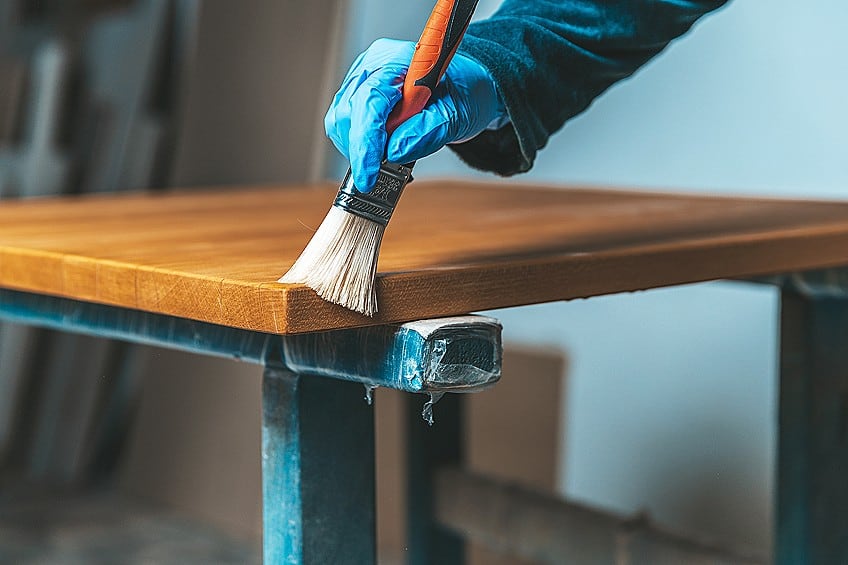
Cabinets
Before you start with your cabinet, first remove any fittings and doors. Make sure you cover all of the areas of the cabinet with the deglosser. You can degloss light or dark wood that has been painted or stained.
Moldings and Trimmings
These items are small, intricate, and difficult to sand, so using a deglosser is ideal for moldings and trimmings. These items also experience a great deal of wear and tear and will greatly benefit from a coating of deglosser.
Furniture
Many pieces of furniture have different patterns engraved on them, and using a deglosser is the one way that you can be sure that all those difficult areas have been thoroughly cleaned.
Doors
It is advisable to remove the door and all the fittings before you start. Ensure that you coat all the corners and carvings with the deglosser. You can spread it on ordinary hollow doors as well.
Precautions When Using Deglosser
Remember that a deglosser is a chemical substance, meaning that you need to apply certain precautionary measures when working with it:
- Wear chemical gloves to protect your arms and hands.
- Using a respirator is a good idea.
- Use goggles to shield your eyes.
- Always do a job in a well-ventilated space.
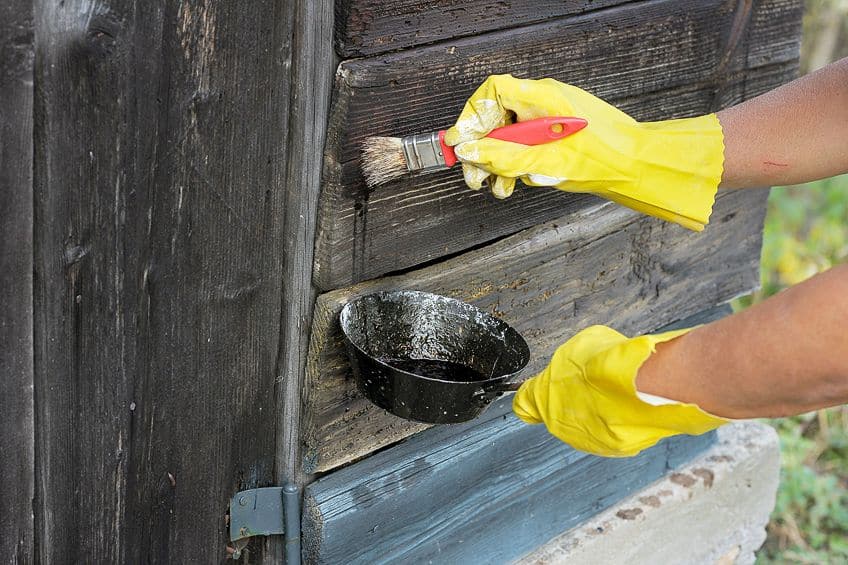
Frequently Asked Questions
Do You Have to Sand Before You Paint Stained Wood?
If you use the correct type of primer and the item is not damaged, then there is no need to sand first before painting. However, it is mostly recommended that you sand the wood before you paint. An oil-based primer is good to use, as it will stick to a varnished or sealed wood surface.
What Type of Paint Can Be Used When Painting over Stained Wood?
Most of the time, an oil-based paint is preferred, but you can also use a water-based paint or even spray paint. A latex primer as well as paint is best for covering a water-based stain.
Can You Paint over Stain Using Acrylic Paint?
Yes. However, you need to sand the wood down first using a 150-grit piece of sandpaper.
Can Chalk Paint Be Used over a Stain?
Yes, this water-based paint can be used to add a matte finish to wood surfaces.

I have been into woodworking since 2005 and woodturning since 2011. Because of my love for wood and woodworking, I started woodhappen.com to teach other enthusiasts about how to finish and seal wood, the best woodworking tools, the different types of wood, and everything else related to woodworking! Read more about me here.

